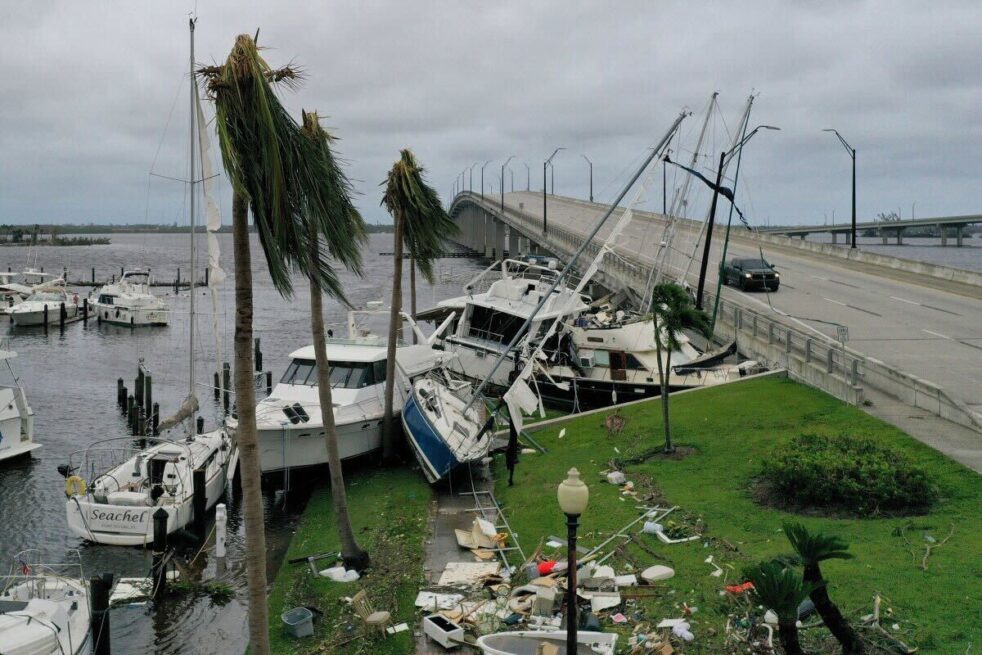As the long Atlantic hurricane season draws to a close this November, impacted residents of the United States East Coast will assess the damages from this year’s storms and prepare to weather future cyclones.
While the yearly battering of hurricanes calls for improvements in infrastructure and disaster preparedness on a national level, some researchers at Tech are highlighting the importance of fostering resilience among the people in landfall areas.
The U.S. and its varied geography is subject to many catastrophic weather events; from tornados to blizzards, people across America prepare for disabling storms and changes to their climate. Those in the Southeast, particularly along the coast, deal with the Atlantic hurricane season from June to November of each year. During this period, multiple strong storms can form in the Atlantic Ocean and come barreling inland with fierce winds and rain.
The most recent example in the U.S. is Hurricane Ian, a Category 4 storm that made landfall in Florida on Sept. 28, according to the National Oceanic and Atmospheric Administration (NOAA). After rapidly intensifying in the Gulf of Mexico, Ian became the fifth strongest hurricane to hit the U.S. and started to batter Florida and the Carolinas in the next few days. A preemptive state of emergency was declared by Governor Brian Kemp on Sept. 27 for Ian, but it was realized on Sept. 29 that the storm had weakened and changed course away from Georgia. Although some parts of the state did experience heavy winds, rain and power outages, the impact of Hurricane Ian was much smaller than anticipated.
The coastal city of Savannah, Ga. was expecting to be directly hit by the hurricane but emerged relatively unscathed. While this cyclone missed the low-lying city, Savannah is constantly at risk of being struck by hurricanes and must take precautions to avoid catastrophic damage. A team of Tech researchers is targeting Savannah as a location to encourage disaster preparedness and resilience, starting with the youth of the community.
“We knew we wanted to focus on marginalized communities because Black and brown communities are disproportionately affected by hurricanes, flooding [and] a variety of other types of natural disasters,” said Allen Hyde, assistant professor in the School of History and Sociology and one of the principal investigators on this research project.
Savannah has a large population of Black residents, and the team saw youth in the communities as a link to their families and other community members.
Hyde and his fellow researchers participated in the Civic Innovation Challenge from the National Science Foundation and chose to focus on disaster resilience. After engaging with the Harambee House / Citizens for Environmental Justice, a nonprofit located in Savannah, the team recognized the importance of making youth in the city more aware of and prepared for future hurricanes. This spawned the Youth Advocacy for Resilience to Disasters (YARDs) program, which features an interdisciplinary and cross-sector team from various institutions, including Hyde and his co-PIs Yanni Loukissas, Philip Omunga, Nisha Botchwey and Mildred McClain.
The YARDs team implemented these initiatives in the summer by hosting a short camp to educate middle school students about hurricanes and how their effects can be mitigated.
“We want [students] and their families to be more prepared, so they do some activities around disaster preparedness,” Hyde said. “Also, we want to improve self-efficacy and group-efficacy around disasters and resilience, so we really want them to feel that they can make a difference, that their voices can be heard.”
Some activities the students participated in included observing a floodplain simulation, along with creating maps to better visualize where to put mitigation measures in communities.
Hyde said the summer session not only educated youth on these topics, but also allowed them to have fun and exposed them to engineering-related fields. The YARDs team will also begin an afterschool program in October in Savannah to advance the work they started in the summer.
While Hyde and his colleagues continue to hone and specialize their program in Savannah, they also look forward to the future directions of their research.
“The hope is that this will become a replicable and transferable and sustainable project. So, we would do this in Savannah, probably a little bit more of Chatham County, and then expand out within coastal Georgia,” Hyde said. Savannah is not the only city with flooding issues that could benefit from these programs.
Hyde stated that flooding within Atlanta could be addressed through these sessions as well as in other parts of the country.
Hyde also mentioned that heat is another environmental obstacle for residents of Savannah and listed other disasters such as tornadoes and wildfires as areas where youth could be rallied to create change.
By empowering youth to understand how hurricanes and other natural disasters affect them, the YARDs team hopes their students will advocate for change in their local communities.
As climate change increases the frequency and intensity of tropical cyclones, more resilient infrastructure will be required to withstand these events, and the YARDs program is a step to train a more resilient generation to take greater action.
